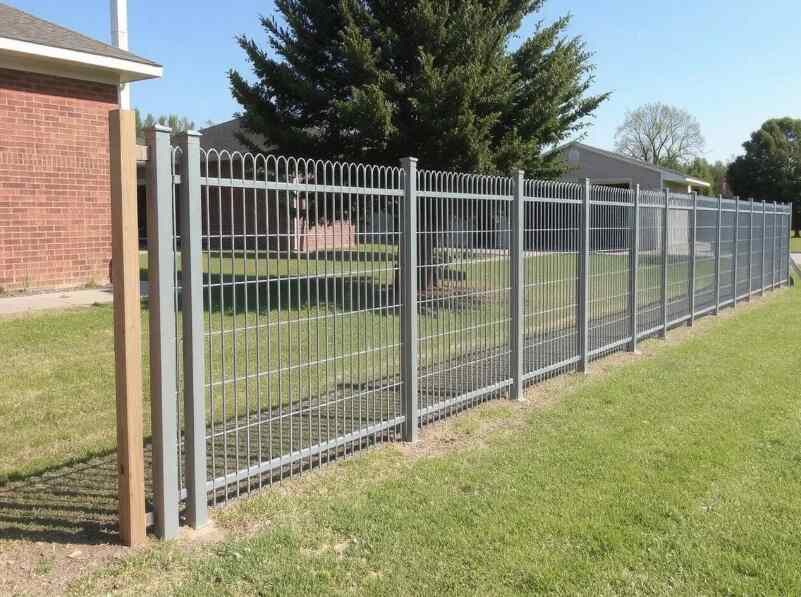When it comes to securing your property with the latest and advanced technology, then Delta V-Tech fencing would be nice. It has been termed as one of the most difficult, secure, and technologically advanced fencing systems. Delta V-Tech fencing offers something beyond just marking in boundaries; it adds to the security features. In this guide, we’ll walk you through the Delta V-Tech fence installation instructions, providing all the details you need for a successful setup.
Table of Contents
ToggleWhat You’ll Need for Installation
Before you begin, gather all the necessary tools and materials. Here’s a list of what you’ll need:
Tools and Materials for Delta V-Tech Fence Installation Instructions
Tools:
- Shovel or post hole digger
- Measuring tape
- Level
- Power drill
- Wrench
- Concrete mix (if needed)
- Hammer
- Screwdriver
- Wire cutters
- Ladder (if installing a high fence)
Materials:
- Delta V-Tech fence panels
- Fence posts
- Post brackets (if needed)
- Screws and bolts
- Gate (if installing)
- Protective gear (gloves, goggles)
Once you have everything in place, you can begin the installation process.
For more tech guide blogs visit Tech Duration.
Step-by-Step Delta V-Tech Fence Installation Instructions
Step 1: Design your fence structure
First of all, know where the fence is going-that is, mark the boundaries of your property, where the posts are going.
Mark the corners and gate location
Begin with determining the corners of your fencing area. Take stakes and string to draw a straight line along the space. If your plan requires leaving enough room for a gate, do it.
Measure post spacing
For spacing between posts, the Delta V-Tech fences do have some specifications, usually provided by the manufacturer, but most have a common span of 6 to 8 feet between posts. This, however is a generalization that should also be cross-checked with product specifications.
Step 2: Digging of the post holes
After marking your layout, the next step is digging holes for posts.
Digging the holes
Set post holes to be at least one-third of the total post height. That means if using 8-foot poles, you may want holes about 2 to 3 feet deep. The diameter should be about three times the width of the pole.
Using either a post hole digger or a shovel, dig out each hole independently to make sure the depths of all holes are the same. Proper leveling of the poles has to ensure strength in the fence.
Characteristics
Optional to add gravel for drainage Putting about 6 inches of gravels at each hole’s bottom before setting up the poles is a good idea; it serves drainage and hence extends the life cycle of the pole.
Step 3: Setting up the fence poles
With the holes prepared, you can now proceed to install the poles.
Insert and align the poles
Place each pole into the appropriate hole, and with the use of a level, ensure it is straight. It is handy when someone else can hold the pole while a person checks if it is aligned or not.
Pour concrete – optional
Setting Concrete-if you’re not convinced by the above process or want your build to be a little heavier and more robust, concrete around the bottom of each post is in order in either sandy or shifting soil. Follow the concrete manufacturer’s instructions but let the concrete set completely before proceeding to the next steps. Concrete usually sets within 24 to 48 hours.
Step 4: Mount the fence panels
Once the posts are held in their places, attach the fence panels of Delta V-Tech. While it is designed for easy installation, this process requires precision.
Place the panel
Put the first panel against the post and align it properly. The bottom should be near the ground, but leave a little gap there in case moisture could damage it over time. Support the panel temporarily with clamps.
Secure the panel
Use a power drill with screws or bolts to attach the panel to the post, one side against the other. Make sure it is secure but do not overtighten screws or bolts since this can easily cause damage to such material.
Repeat everything for all panels until the whole fence is ready.
Step 5: Gate Installation
If you designed the project with a gate, now would be a good time to install it.
Setting the Gate Posts
It will be important to make the posts extra strong; these bear not only the weight of the gate but also support the repeated use. Make sure the posts are deep and possibly reinforced with additional concrete for extra stability.
Attach the Gate
Attach the gate to the posts, following the manufacturer’s instructions. This would include the installment of hinges and latches. Check the alignment again so that the gate opens and closes with ease and security.
Step 6: Electrical Setup (if applicable)
One of the key features for which the Delta V-Tech fence system allows is the possibility for incorporation into electrical security components, such as alarms or motion sensors.
Wiring and Power Source
If your fencing involves electrical parts, then follow the instructions provided by Delta V-Tech. This typically involves wiring along the line of the fence and then hooking it up to a power source. For safety reasons, make sure the power is off while mounting.
Test the System
Plug everything in and turn the electrical system on. Test it to make sure it’s working correctly, then check loose or faulty wiring connections before completely turning it on.
Step 7: Inspect and Finalize
Before closing, make sure you do a fine review of your newly installed fence for everything to be appropriately aligned, tightened, and working as it should.
Check Stability
Lean on the fence and lightly rock it to check stability. Posts shouldn’t shift in this manner. The panels shouldn’t shift or rattle accordingly.
Tighten Screws and Bolts
Check that all screws and bolts are tightened. Over time, these tend to loosen, and periodic checks would be a good recommendation.
Paint or treatment (optional)
Protective paints or sealant may be applied if the Delta V-Tech fence is in metal or wooden constructions for durability and to sustain newness for a longer time.
How to Maintain Your Delta V-Tech Fence
With your fence up, basic regular maintenance will enable it to stay in top-notch condition. Basic Tips to Keep Your Fence As Good As New:
- Check regularly: Walk the perimeter every few months and look for any wear and tear.
- Clean as needed: Hose off or use a pressure washer to remove dirt and debris. Tough stains can be cleaned with mild soap and water.
- Tighten Hardware: Bolts, screws, and other hardware will loosen overtime. Periodically check them and tighten when necessary.
- Oil hinges: If you have a gate, lubricate the hinges from time to time so they can continue moving freely.
- Check electric elements: If your fence has an electric system, then regularly test to make sure everything is functioning correctly.
Common Installation Mistakes to Avoid
Even the best-laid plans can let in some mistakes in the actual installation. Following are a few common mistakes and how you could avoid them:
- Incorrect spacing of posts: Measure a second time before digging. A fence is not strong if the posts are too far apart.
- Don’t use gravel or concrete: Posts, in soft-soil areas, tend to shift over time; hence, always concrete them or secure them with gravel.
- Panel misalignment: Make sure the panels before nailing them into the posts are level. Such a fence, apart from not looking good, can be less secure as well.
- Forgetting to check the electrical system: In case your fence is electrical in nature, then always test it before considering it fitted.
Questions Normally Asked About Delta V-Tech Fencing
How long does it take to follow the Delta V-Tech fence installation instructions?
The time it takes to install a Delta V-Tech fence depends on the size of the fence, the help you have, and whether you’re following the basic or advanced Delta V-Tech fence installation instructions with electrical components.
Can I terminate a Delta V-Tech fence myself, or do I need professional help?
Depending on your handyman skills, you may still be able to install a Delta V-Tech fence yourself with just very general DIY skills. Those who are not comfortable with any steps of involved electrical wiring or setting posts in concrete may want to contract those aspects out for peace of mind.
Do I use concrete for posts?
Not always, but highly recommended for extra stability in case your area has soft soil or in case you live in a windy region. Concrete at the post bases will keep your fence strong for years to come.
What is the proper spacing of posts for a Delta V-Tech fence?
The spacing among posts, depending on the job, runs between 6 and 8 feet, though it is sure to vary depending on specifics from the actual manufacturer. All things said, proper spacing would allow the fence to be strong enough and last longer.
How do I maintain my fence after following the Delta V-Tech fence installation instructions?
Once you’ve followed the Delta V-Tech fence installation instructions, regular maintenance is simple. Inspect it regularly for signs of wear or damage, and clean it periodically.
Can gates be installed with my Delta V-Tech fence?
Yes,Delta V-Tech fences can have gates. When building a gate, you must use strong posts and follow the manufacturer’s guide on hinges and latches installation part. The proper alignment is required for it to rotate smoothly.
How does a Delta V-Tech Fence’s Electrical System Work?
Delta V-Tech fences can integrate with a range of security components: alarms, motion sensors, or even remote monitoring. Running along the fence is electrical wiring, which attaches to a power source. Installation is done in accordance with manufacturer’s instructions for safe installation-always consult a licensed electrician if you are unsure about how to handle wiring.
Are Delta V-Tech fences weather resistant?
Yes, Delta V-Tech fences are weatherproof. However, you probably would want to paint or seal it further, depending on the material used, either metal or wood, to give it extra resistance.
Can Delta V-Tech Fences be installed on uneven terrain?
It is possible to install the Delta V-Tech fencing on uneven terrain. You must take into account the slope of the land, adjusting for post height and ensuring that the panels follow the contours of the land. Of course, this requires a bit of advanced planning and adjustment to ensure it’s a somewhat clean and level installation.
What if my fence panels are out of line?
If there are misaligned fence panels, balkanize the screws or bolts that hold the panels in place and reinstall. This time, make sure they are straight using a level before re-securing. Correcting any misalignment now will prevent future problems during the installation process.
How to correct a loose post after installation?
If, after its installation some looseness is created within the post, it will need extra support. You can dig around the base and add more concrete to hold it. Sometimes, putting in gravel for better drainage may also work, or changing the depth of the holes for the posts may do the magic.
Does Delta V-Tech fencing need a permit?
Fencing permit requirements are subject to your local jurisdictions. Many times it’s a good idea to check with the city or municipality to see if you need any type of permit before you start your installation, especially when the height of the fence or barrier is above a minimum threshold or contains electrical components.
How tall could a Delta V-Tech fence be?
Delta V-Tech can be in various heights, based on your needs. However, local zoning may affect what height your fence can be. It is always best to contact your local authorities regarding height limits before you buy and install your fence.
Can I fence a common boundary with my neighbour?
Yes, you can fence a shared boundary, but your neighbor should always be consulted in advance when fencing. Quite often, costs, maintenance, and other responsibilities may need to be agreed upon for a shared fence. Always check in on local property laws regarding shared boundaries.
What happens if there is a problem in the electrical system after installation?
If you find an issue with the electrical system, you’ll want to check the wiring for loose or damaged parts. If you’re not comfortable dealing with any kind of electrical work, then it would be best to call a professional to help you with it. Otherwise, refer to more complex systems to Delta V-Tech customer support-or an electrician that is familiar with security fencing.
Final Thoughts
Following these Delta V-Tech fence installation instructions ensures a secure and durable fence that will serve your property well for years to come. With proper planning, correct tools, and attention to detail, you will then finally have a safe and long-lasting fence that offers value and beauty to your property. Just a reminder: a well-installed fence is not only security, but also an addition to your home and peace of mind. Take your time and follow these instructions; with this, enjoy the benefits of your new Delta V-Tech fence.





